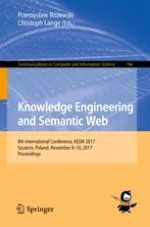2017 | Buch
Knowledge Engineering and Semantic Web
8th International Conference, KESW 2017, Szczecin, Poland, November 8-10, 2017, Proceedings
herausgegeben von: Dr. Przemysław Różewski, Christoph Lange
Verlag: Springer International Publishing
Buchreihe : Communications in Computer and Information Science
